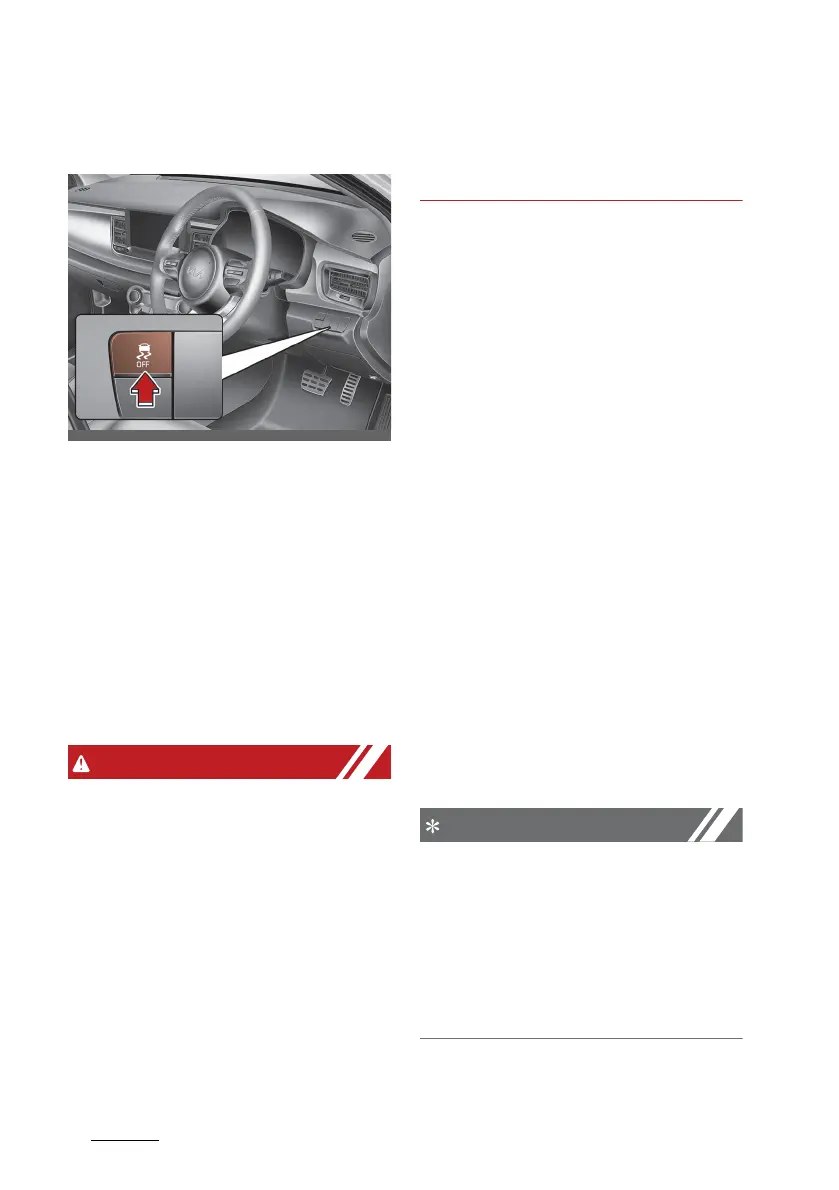Driving your vehicle
586
Brake system
Electronic Stability Control (ESC) (if
equipped)
The Electronic Stability Control
(ESC) system is designed to stabilize
the vehicle during cornering
manoeuvres. ESC checks where you
are steering and where the vehicle is
actually going.
ESC applies the brakes at individual
wheels and intervenes in the engine
management system to stabilize
the vehicle.
Never drive too fast for the road
conditions or too quickly when cor
-
nering. Electronic stability Control
(ESC) will not prevent accidents.
Excessive speed in turns, abrupt
manoeuvres and hydroplaning on
wet surfaces can still result in seri
-
ous accidents. Only a safe and
attentive driver can prevent acci
-
dents by avoiding manoeuvres that
cause the vehicle to lose traction.
Even with ESC installed, always fol
-
low all the normal precautions for
driving - including driving at safe
speeds for the conditions.
The Electronic Stability Control
(ESC) system is an electronic sys
-
tem designed to help the driver
maintain vehicle control under
adverse conditions. It is not a sub
-
stitute for safe driving practices.
Factors including speed, road condi
-
tions and driver steering input can
all affect whether ESC will be effec
-
tive in preventing a loss of control. It
is still your responsibility to drive
and corner at reasonable speeds
and to leave a sufficient margin of
safety.
When you apply your brakes under
conditions which may lock the
wheels, you may hear a 䳖tik-tik䳓䳓
sound from the brakes, or feel a
corresponding sensation in the
brake pedal. This is normal and it
means your ESC is active.
A click sound may be heard in the
engine compartment when the
vehicle begins to move after the
engine is started. These conditions
are normal and indicate that the
Electronic Stability Control function
is functioning properly.

